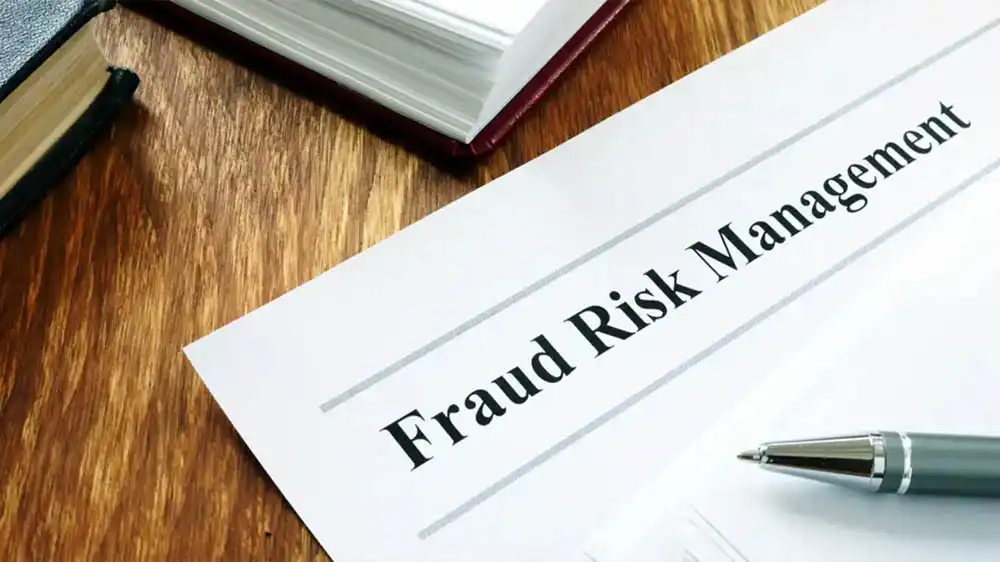How to conduct fraud risk management?

Fundamental Fraud Risk Management Principles: A Blueprint For Payment Fraud Prevention Success
In recent years, the landscape of e-commerce and online transactions has witnessed an explosive growth, primarily catalyzed by the global health pandemic. As consumers adapted to the ‘new normal,’ they increasingly turned to online channels for their shopping needs. However, this surge in digital activity hasn’t just brought prosperity; it has also ushered in a parallel surge in fraudulent activities.
To put things into perspective, consider this alarming statistic from 2021: the Federal Trade Commission (US FTC) reported a staggering 70% increase in consumer fraud reports compared to the previous year. A jaw-dropping $5.8 billion was lost to scams, with impostor and online shopping scams topping the list. In response to this alarming trend, businesses have recognized the urgent need to fortify their defenses against fraud, not only to protect their reputation but also the trust of their valued customers.
While it’s true that certain sectors, such as online banks, e-commerce platforms, and online businesses, are more susceptible to fraud, it’s crucial to understand that no business is immune. As long as your enterprise operates, it is potentially at risk of falling victim to fraudulent activities.
In this article, we unveil the concept of fraud risk management and outline four fundamental principles that can be seamlessly integrated into your business strategies, starting today.
Embracing Fraud Risk Management
Fraud Risk Management is a meticulous process through which organizations identify, comprehend, and address both internal and external fraud risks. It entails establishing a robust program aimed at detecting and preventing potential fraudulent activities within your organization’s ecosystem.
A comprehensive fraud management program is your shield against information theft, payment fraud, account takeovers, and much more.

The Four Pillars of Fraud Risk Management
1. Fraud Risk Governance
Fraud risk governance entails a set of well-defined rules, best practices, and processes that form the backbone of your organization’s fraud risk management efforts. A transparent, easily understandable governance policy not only empowers your risk management team but also underscores your commitment to safeguarding not just your system but also your stakeholders.
Key elements of fraud risk governance include:
- Elevating fraud awareness among stakeholders, including customers and users.
- Ensuring the quality and clarity of every rule, instruction, best practice, and process.
- Continuous monitoring of fraud risks across all platforms, especially if you operate across multiple channels.
- Staying updated with the latest advancements in fraud detection and prevention technology.
- Providing a clear roadmap for investigating and addressing fraud incidents.
For governance to be effective, it must be not only meticulously planned but also documented comprehensively. Your fraud risk management team should be well-versed in standard procedures, ready to provide detailed reports when necessary.
2. Fraud Risk Assessment
Risk assessment, in the context of fraud, involves identifying and categorizing risks based on their severity and potential impact. This process enables your team to create a risk quadrant that guides the selection of appropriate solutions for each risk type and level. Here are some practical strategies:
-
Identify your top risks: Review past cases to identify the most frequent types of fraud your organization faces, highlighting areas of vulnerability.
-
Scrutinize your existing systems: If you’re witnessing an uptick in bad logins or suspicious transactions, there might be flaws in your current setup. Consider bringing in experts for system testing and improvements.
-
Heighten awareness of evolving risks and vulnerabilities: Beyond the known threats, your fraud risk management team should proactively investigate potential risks and regularly monitor them. This enhances the accuracy of risk predictions and response times.
-
Stay informed about fraud trends: Engage in industry and community dialogues to stay updated on emerging fraud trends and how other companies are combating them. These interactions can provide valuable customer insights for long-term user experience enhancements.

3. Fraud Prevention
After establishing a robust fraud risk governance framework and conducting thorough risk assessments, the next step is implementation. This phase involves executing policies supported by advanced tools and software to prevent fraud.
Modern technology has revolutionized fraud prevention, with AI-powered smart detection tools analyzing vast datasets to unveil fraudulent activities. However, before investing in high-tech solutions, it’s wise to explore traditional methods such as manual reviews, criteria setting, rule engines, and new detection tools to better grasp the big picture.
4. Monitoring Risk
With a comprehensive fraud prevention program in place, continuous risk monitoring becomes paramount. The approach may vary depending on whether you opt for manual or automated monitoring.
Manual Monitoring: In this approach, a dedicated team of technicians reviews and reports on incidents. Additionally, cross-checking is also a valuable strategy, as manual reviews can sometimes trigger false positives due to fatigue. This method can foster collaboration, enabling your team to devise streamlined solutions case by case.
Automated Monitoring: Automated systems execute preset risk criteria and decisions. However, this doesn’t mean you can set it and forget it. While requiring less manual intervention, these types of systems still demand maintenance from time to time. Regularly reviewing criteria and risk policies within the system provides you with the insights into its effectiveness, facilitating timely adjustments. For advanced solutions, automated rule-setting is often included as a feature, which calls for periodic checks to ensure compliance with risk policies.

In Conclusion
Regardless of your organization’s size, the specter of fraud looms. Effective fraud risk management plans not only protect your interests but also create a safer environment for your valued customers and users.
By adhering to these four fundamental principles, your business can embark on a journey to construct a robust prevention framework from today. With a structured plan and determination, your team is ready to take on fraud risk management, secure your systems, and elevate your business to new heights of trust and prosperity.
